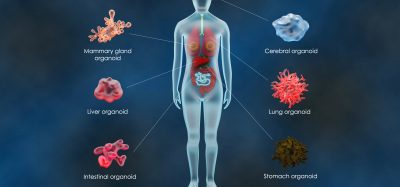Expert view: Screening tools for better lead characterisation
Posted: 19 March 2018 | Alessandro Spedito (Global Strategy Manager, CRO and Preclinical presso Merck Group) | No comments yet
Predictiveness is one of the key factors for success in the drug discovery workflow. Many compounds fail at late stages due to lack of predictive data or the discovery of unwanted side effects.
A combination of early discovery tools for better characterisation and predictive data can help researchers working on the next generation of therapeutics to better understand their lead candidate. This allows researchers to react quickly and prevent failures from reaching the clinical pipeline.
Genome editing tools like the CRISPR-Cas9 system are integral in identifying new targets involved in the biological and genetic mechanisms responsible for disease. Tools like the Sanger Arrayed Lentiviral CRISPR Library can be used to screen both the whole mouse and human genome and can help determine which gene might be involved in a particular pathway.
After choosing the correct target, the next step is developing a predictive cell model for screening purposes. Custom cell engineering is therefore of utmost importance in screening potential candidates and assuring that researchers can select a new molecular entity with the best safety and efficacy properties.
Biomarkers are redefining how precision therapies are discovered, validated and delivered.
This exclusive expert-led report reveals how leading teams are using biomarker science to drive faster insights, cleaner data and more targeted treatments – from discovery to diagnostics.
Inside the report:
- How leading organisations are reshaping strategy with biomarker-led approaches
- Better tools for real-time decision-making – turning complex data into faster insights
- Global standardisation and assay sensitivity – what it takes to scale across networks
Discover how biomarker science is addressing the biggest hurdles in drug discovery, translational research and precision medicine – access your free copy today
Coupling a robust and predictive cell model with compound libraries, such as the MyriaScreen Diversity collection or LOPAC, will not only ensure that your lead compound will have drug-like properties but that off-target effects are minimised.
Using robust genetic engineering and screening tools will not only lead to a stronger drug pipeline, but will also ensure continuity in the workflow and guarantee that only the leads with the highest potential will make their way to clinical trials.
The life science business of Merck KGaA, Darmstadt, Germany operates as MilliporeSigma in the U.S. and Canada
Related topics
Assays, CRISPR, Drug Discovery, Drug Discovery Processes, Gene Therapy, Screening, Target Validation
Related organisations
Merck KGaA
Related people
Alessandro Spedito








